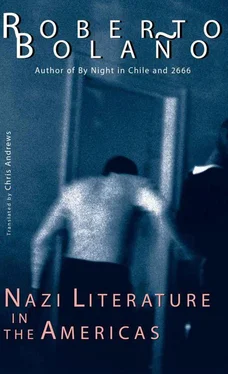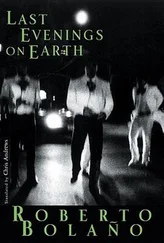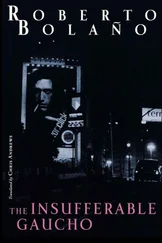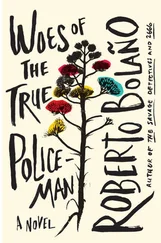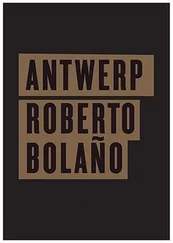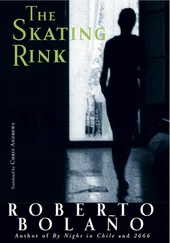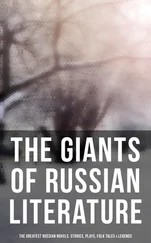González took his advice about the transfer but stubbornly continued to exploit his peculiar poetic vein. The next three poems he published (not in Iron Heart , which had folded, but in the cultural supplement of a Santiago newspaper) are free of surrealist images, symbolist baggage and modernist vagaries (González, it must be said, knew almost nothing of the three schools in question). His verse has become concise, his images simple; the figures that recurred in the six previous poems have also undergone a transformation: the Merovingian warriors have become robots, the women are now dying beside putrid streams of consciousness, and the mysterious tractors plowing the fields without rhyme or reason are either secret vessels sent from Antarctica, or Miracles (with a capital letter). And now these figures are counterbalanced by a sketchy presence, that of the author himself, adrift in the vast spaces of the fatherland, observing the apparitions like a registrar of marvels, but unenlightened finally as to their causes, phenomenology or ultimate purpose.
In 1955, at the cost of great personal sacrifice and tremendous effort, González financed the publication of a chapbook containing twelve poems, printed by a press in Cauquenes, capital of the province of Maul, where he had been transferred. The little book was entitled Twelve , and the cover, which was the author’s own work, is noteworthy in its own right, as it was the first of many drawings he produced to accompany his poems (the others came to light only after his death). The letters of the word Twelve on the cover, equipped with eagle talons, grip a swastika in flames, beneath which there seems to be a sea with waves, drawn in a childlike style. And under the sea, between the waves, a child can in fact be glimpsed, crying, “Mom, I’m scared!” The speech bubble is blurred. Under the child and the sea are lines and blotches, which might be volcanoes or printing defects.
The twelve new poems add new figures and landscapes to the repertoire developed in the previous nine. The robots, the streams of consciousness and the ships are supplemented with Destiny and Will, personified by two stowaways in the holds of a ship, as well as The Disease Machine, The Language Machine, The Memory Machine (which has been damaged since the beginning of time), The Potentiality Machine and The Precision Machine. The only human figure in the earlier poems (that of González himself) is joined by the Advocate of Cruelty, a strange character who sometimes speaks like a regular Chilean guy (or rather, like a grammar school teacher’s idea of a regular guy) and sometimes like a sibyl or a Greek soothsayer. The setting is the same as for the earlier poems: an open field in the middle of the night, or a theater of colossal dimensions situated in the heart of Chile.
González sent the chapbook to various newspapers in Santiago and the provinces, but in spite of his best efforts, it made almost no impression. A gossip columnist in Valparaiso wrote a humorous review entitled “Our Rural Jules Verne.” A left-wing paper cited González, along with many others, as an example of the growing Fascist influence on the nation’s cultural life. But in fact no one, on the Right or the Left, was reading his poems, much less supporting him, except perhaps Florencio Capó, who lived far away, and whose friendship had been sorely tried by the cover of Twelve . In Cauquenes, two stationery stores displayed the book for a month. Then they returned the copies to the author.
Stubbornly, González went on writing and drawing. In 1959 he sent the manuscript of a novel to two publishers in Santiago. Both rejected it. In a letter to Capó he refers to the novel as his scientific work, a compendium of his scientific knowledge, which he will bequeath to posterity, although it was no secret that he knew next to nothing about physics, astrophysics, chemistry, biology or astronomy. When he was transferred to a village near Valdivia, his health, which had been delicate at the best of times, deteriorated sharply. In June 1961, he died in the Valdivia Provincial Hospital at the age of forty. He was buried in a common grave.
Many years later, thanks to the efforts of Ezequiel Arancibia and Juan Herring Lazo, who had read González’s contribution to Iron Heart , scholarly research into the poet’s work began in earnest. Luckily, most of his papers had been kept, first by his widow, then by one of his daughters. And in 1976, Florencio Capó entrusted the scholars with the letters he had received from his old friend.
The first volume of the Complete Poems (350 pages), edited and annotated by Arancibia, appeared in 1975.
The second and final volume (480 pages) followed in 1977. It included González’s overall plan for his works, sketched out in note form back in 1945, and a great many drawings, which were highly original in a number of respects, and whose function was to help the author himself to understand, as he put it, the “avalanche of novel revelations troubling my soul.”
In 1980, The Advocate of Cruelty was published, with the strange dedication: “To my Italian friend, the unknown soldier, the laughing victim.” The novel is 150 pages long, and elicits a certain wariness on the part of the reader. It makes no concessions to fashion (although exiled as he was in Maule, González can hardly have been aware of the literary fashions of his day), or to the reader, or to the author himself. Cold, but spellbound and spellbinding, as Arancibia writes in his preface.
In 1982, a slim, ninety-page volume containing his entire correspondence concluded the series of posthumous publications. It contains the letters he wrote to his fiancée, to his friend Capó (which account for the greater part of the book), to magazine editors, colleagues, and officials in the Ministry of Education. The letters reveal little about his work, but a great deal about the suffering he had to endure.
Today, thanks to the enterprising promoters and editors of the Southern Hemisphere Review , two streets bear the name of Pedro González Carrera, one in a far-flung suburb of Cauquenes, the other near a treeless square in the northern part of Valvidia. Few people know whom they commemorate.
ANDRÉS CEPEDA CEPEDA known as The Page
Arequipa, 1940–Arequipa, 1986
The first literary ventures of Andrés Cepeda Cepeda were marked by the beneficent influence of Marcos Ricardo Alarcón Chamiso, a local poet and musician with whom he used to spend afternoons jointly composing poems in a restaurant called La Góndola Andina, in his hometown of Arequipa. In 1960 he published a slim volume entitled The Destiny of Pizarro Street , whose subtitle, The Infinite Doors , suggests a series of Pizarro Streets, scattered throughout the continent, which, once discovered (although as a rule they remain hidden) have the power to provide a new framework for American perception , in which will and dream shall blend in a new vision of reality — an American awakening . The thirteen poems of The Destiny of Pizarro Street , composed in rather uncertain hendecasyllabics, failed to attract critical attention: only Alarcón Chamiso reviewed the book, in the Arequipa Herald , praising its musicality above all, the “syllabic mystery that lurks behind the fiery style” of the author.
In 1962, Cepeda began to contribute to the bimonthly magazine Panorama, edited in Lima by the controversial lawyer Antonio Sánchez Luján. The two men met when Sánchez Luján came to Arequipa to be the guest of honor at a Rotary Club dinner. As a result, The Page was born; henceforth Cepeda used that pseudonym to sign articles ranging from political diatribes to movie and book reviews. In 1965 he combined his work for Panorama with a daily column in the Peruvian Evening News , which belonged to Pedro Argote, the flour and seafood magnate, an old friend of Sánchez Luján. There Andrés Cepeda enjoyed his few moments of glory: his articles, ranging widely, like those of Dr. Johnson, provoked hostility and lasting resentment. He gave his opinion on any topic, and believed he had a solution for everything. He made errors of judgment, was sued along with the paper, and, one by one, lost every case. In 1968, while leading a whirlwind life in Lima, he republished The Destiny of Pizarro Street , supplementing the original thirteen poems with five new ones, the elaboration of which, he confessed in his column (“A Poet’s Work”), had cost him eight years of intense effort. This time, because of The Page’s notoriety, the critics did not ignore the book but fell upon it, each trying to outdo the savagery of his peers. Among the expressions employed were the following: prehistoric Nazi, moron, champion of the bourgeoisie, puppet of capitalism, CIA agent, poetaster intent on debasing public taste, plagiarist (he was accused of copying Eguren, Salazar Bondy, and Saint-John Perse, in the last case by a very young poet from San Marcos, whose accusation sparked another polemic opposing academic followers and detractors of Saint-John Perse), gutter thug, cut-rate prophet, rapist of the Spanish language, satanically inspired versifier, product of a provincial education, upstart, delirious half-blood, etc., etc.
Читать дальше
